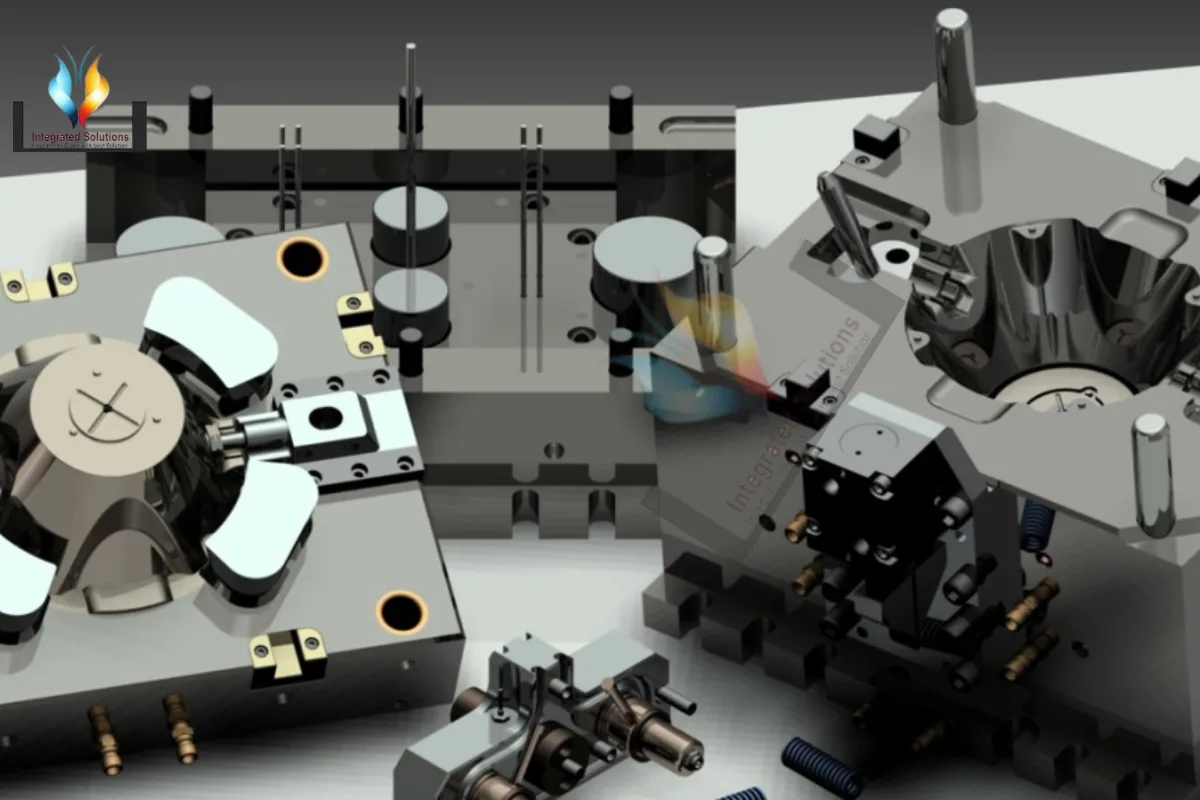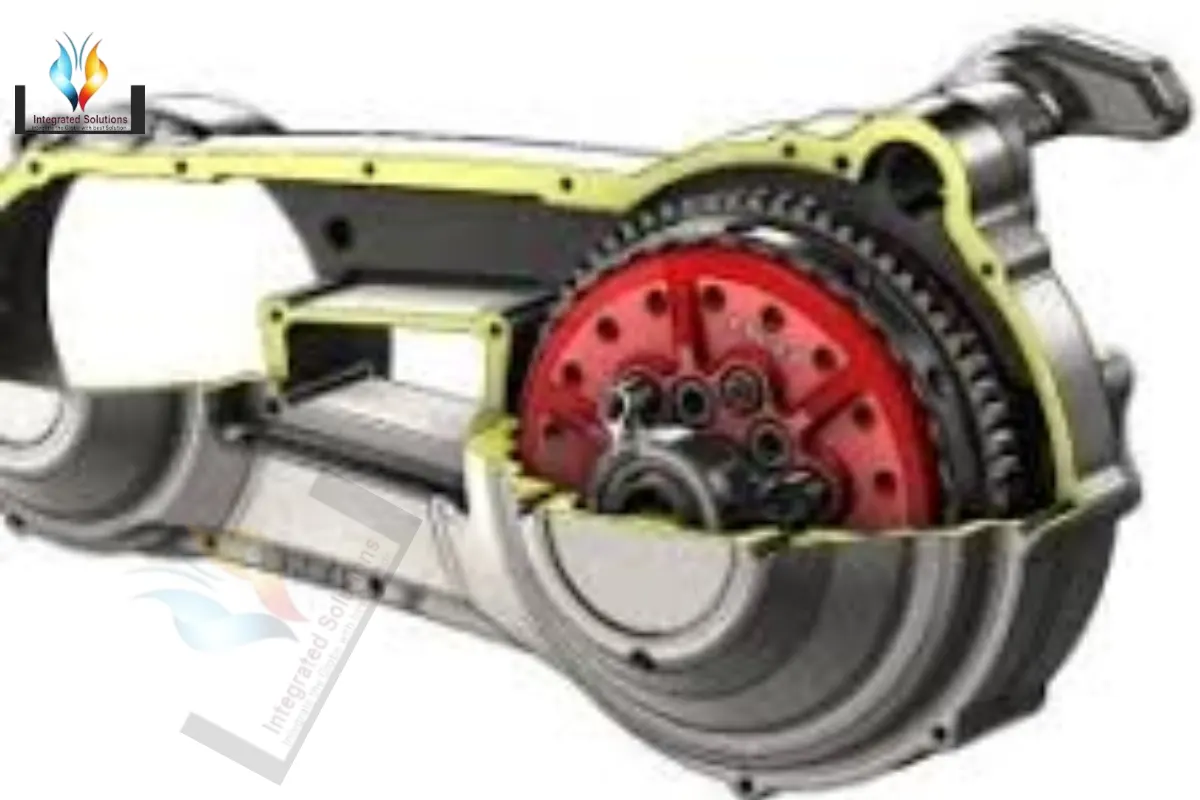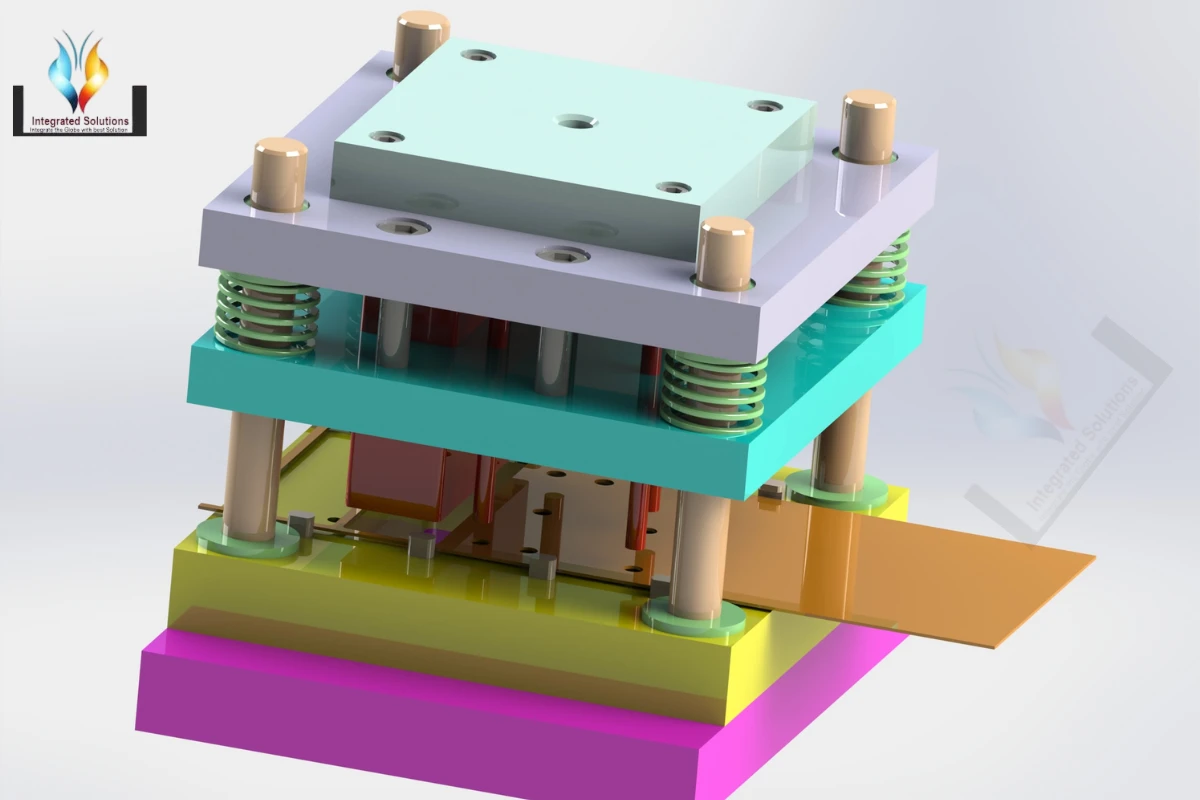🧰 Jig & Fixture Design Services – Global Precision Engineering Solutions
At Integrated Solutions, we deliver world-class jig and fixture design services that empower manufacturers across industries to achieve higher precision, faster production, and reduced costs.
Our expert team uses CAD/CAM, SolidWorks, and simulation-based design to engineer high-quality, performance-driven jigs and fixtures for automotive, aerospace, manufacturing, tool rooms, and energy sectors.
With over 10 years of industry excellence, our custom jig and fixture design ensures:
⚙️ Consistency and repeatability in production.
🧩 Reduced cycle time and human error.
🧠 Accurate positioning with the 3-2-1 locating principle.
🏭 Enhanced productivity and machine efficiency.
🌍 Global standards following ISO, DIN & ASME guidelines.
🧠 What Are Jigs and Fixtures?
Before exploring our capabilities, let’s understand the foundation of modern manufacturing tools.
🔧 Jig (Definition & Function)
A jig is a guiding device used to direct the cutting tool during machining.
Example: A drill jig accurately positions and controls the drill movement for repeatable, high-precision holes.
🧱 Fixture (Definition & Function)
A fixture securely holds and locates the workpiece, ensuring the machining process happens at the correct position and orientation.
Example: A milling fixture locks the component in place during high-speed machining.
⚙️ Difference Between Jig and Fixture
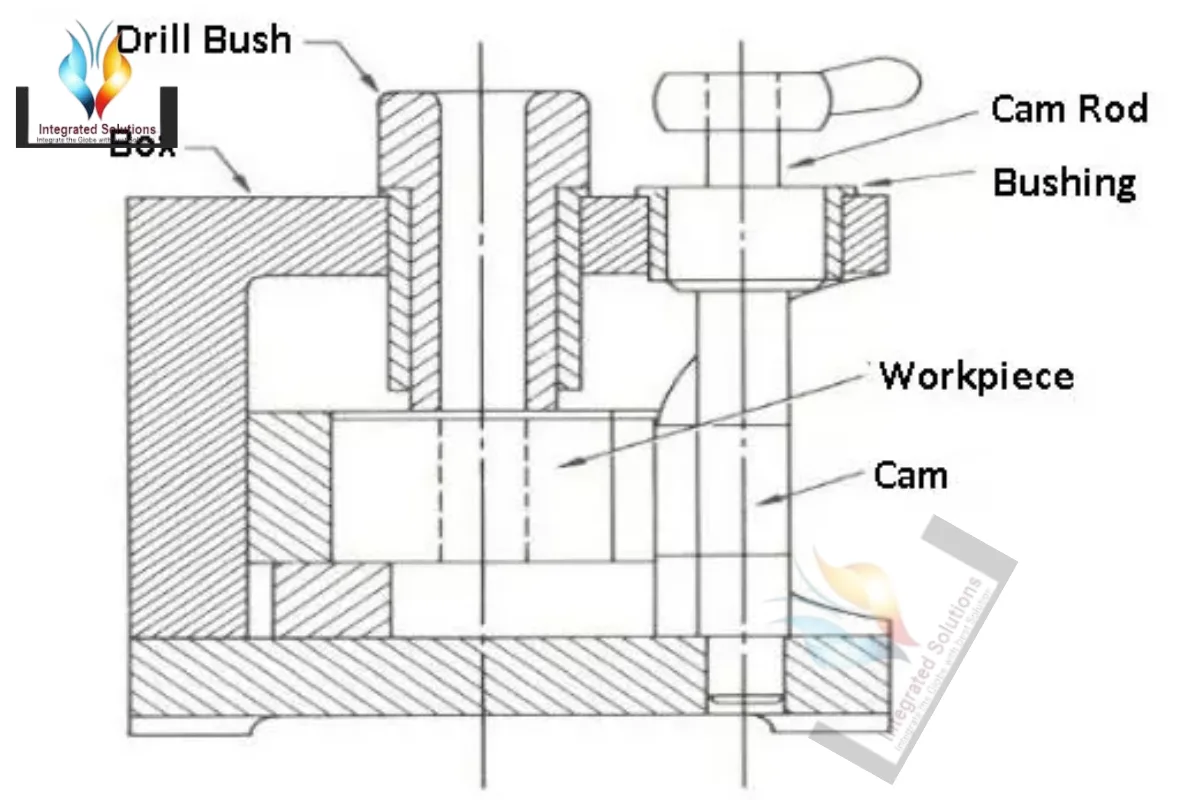
Jig & Fixture Design Services
| ⚙️ Category | 🧰 Jig | 🏗️ Fixture |
|---|---|---|
| 🔩 Purpose | 👉 Guides the cutting tool during machining to ensure precision and repeatability. | 👉 Holds and locates the workpiece firmly in place throughout the operation. |
| 🧠 Function | 🎯 Controls tool direction and positioning — ideal for drilling and boring processes. | 🛠️ Provides stability and alignment — perfect for milling, turning, and welding tasks. |
| 📚 Example | 🔹 Drill Jig 🔹 Template Jig 🔹 Indexing Jig | 🔹 Milling Fixture 🔹 Welding Fixture 🔹 Assembly Fixture |
| 🏁 Key Feature | 🧭 Ensures an accurate tool path and repeatable machining results. | 🧱 Ensures stable workpiece support and precise alignment. |
| ⚙️ Used In | 🪛 Drilling, Boring, Reaming, and other guided tool operations. | ⚒️ Milling, Turning, Grinding, and Welding operations. |
| 🌍 Industry Use | 🚗 Automotive & Aerospace manufacturing — for accurate hole placement and alignment. | 🏭 Tool & Die, Industrial Machinery — for rigid setups and precise machining. |
| ✅ Benefit | ⚡ Boosts machining speed and reduces operator error. | 💪 Enhances machining accuracy and improves repeatability. |
✅ In summary:
A jig guides, while a fixture holds — both are indispensable in precision manufacturing.
🏗️ Why Jig & Fixture Design Is Essential in Modern Manufacturing
Jigs and fixtures are the backbone of mass production, CNC machining, and automation.
Here’s why they are crucial in every factory:
⚙️ Increased Productivity – Minimize setup and idle time.
🎯 Enhanced Accuracy – Ensure component uniformity.
🚀 Reduced Cycle Time – Faster machining with consistent output.
🧠 Error Minimization – Eliminate manual measurement and alignment mistakes.
💰 Cost Efficiency – Long-term savings through durable, repeatable tooling.
🧩 Safety and Reliability – Prevents vibration and component displacement.
At Integrated Solutions, our jig and fixture designs integrate these benefits into every project.
🧩 Our Core Jig & Fixture Design Capabilities
We deliver end-to-end design and manufacturing of jigs and fixtures — from concept to CAD modeling and final validation.
| 🧱 Service Category | ⚙️ Key Capabilities | 🧰 Tools & Techniques |
|---|---|---|
| 🔩 Jig Design | Custom design of drill jigs, plate jigs, leaf jigs, box jigs, and indexing jigs to ensure precise tool guidance and repeatable machining accuracy. | 🖥️ CAD Modeling, 💡 SolidWorks, 🧮 3D Simulation, and Design Validation tools for accuracy and performance testing. |
| 🛠️ Fixture Design | Design and development of milling fixtures, drilling fixtures, welding fixtures, and assembly fixtures to achieve rigid and stable setups. | 📐 3-2-1 Principle, ⚙️ CNC Tool Standards, and 📊 CAD Design Methods ensuring precise alignment and repeatability. |
| 🧲 Clamping & Locating Systems | Development of durable clamps, vises, and custom work-holding units for consistent and vibration-free machining operations. | 🔧 Precision Machining, 🧠 Stress Analysis, and 🧰 Ergonomic Fixture Design for enhanced stability and ease of use. |
| ⚡ Design Optimization | Improvement of existing jigs and fixtures through error reduction, lightweight design, and cycle time optimization for higher efficiency. | 📉 FEA Analysis, 💻 Mold Flow Simulation, and 🧩 Prototyping tools to validate design strength and reliability. |
| 📄 Detailed Drawings & Documentation | Creation of complete 2D/3D manufacturing drawings, BOMs, and assembly layouts to support production and inspection processes. | 🧮 AutoCAD, 🧠 CATIA, and 📏 ISO Drawing Standards ensuring full compliance with global engineering practices. |
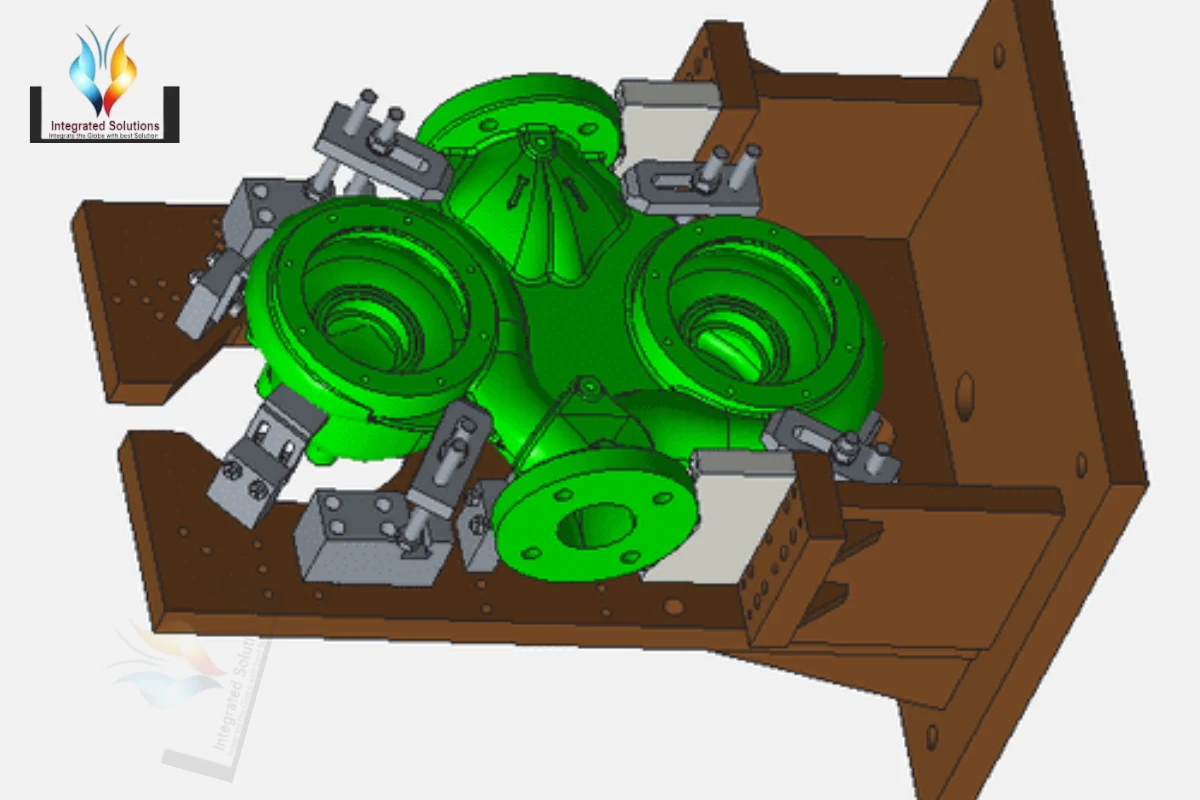
Affordable Jig & Fixture Design Services in India
Every design is validated with simulation tools to ensure accuracy, rigidity, and repeatability.
🌍 Industries We Serve Globally
Our custom jig and fixture designs support clients in over 20 countries, including Germany, USA, UK, Canada, India, and across Europe & Asia.
🚗 Automotive Industry
Precision jigs and fixtures for engine blocks, gear housings, brackets, and sub-assemblies — ensuring repeatability for large-scale production.
✈️ Aerospace Industry
High-tolerance drilling and assembly fixtures for airframe structures, turbine blades, and landing gear components.
🏭 General Manufacturing
Mass production fixtures for machining, fabrication, and assembly lines, improving throughput and reducing downtime.
⚡ Energy & Power
Fixtures for turbine components, pump housings, and heavy-duty shafts, designed for extreme temperature and pressure applications.
🔧 Tool Rooms & OEMs
Custom inspection jigs, checking fixtures, and prototype tools for R&D and precision testing applications.
💠 Our Design Process – From Concept to Completion
At Integrated Solutions, we follow a structured, engineering-driven workflow for precision jig and fixture design:
1️⃣ Requirement Analysis – Understanding client product geometry, tolerances, and production needs.
2️⃣ Concept Design – Applying 3-2-1 principles and modular fixture design techniques.
3️⃣ CAD Modeling – Using SolidWorks, CATIA, and AutoCAD for detailed 3D designs.
4️⃣ Simulation & Validation – Performing stress analysis and motion simulation.
5️⃣ Manufacturing Support – Generating optimized drawings and BOM for production.
6️⃣ Testing & Approval – Ensuring fit, function, and accuracy in trial runs.
✅ Result: High-performance jigs and fixtures that meet global standards for quality and efficiency.
🧱 Advanced Principles We Apply
⚙️ 3-2-1 Locating Principle
Defines how a component is constrained in 3D space to restrict six degrees of freedom — ensuring repeatable positioning.
🧩 Modular Fixture Design
Allows reconfigurable setups for multiple part geometries — ideal for flexible manufacturing systems.
🧠 Design for Manufacturability (DFM)
Optimizes jig and fixture designs for ease of production, maintenance, and tool life extension.
🧰 Finite Element Analysis (FEA)
Used to analyze stress, deflection, and vibration, guaranteeing robust and stable performance under load.
🧭 Global Engineering Excellence – Why Choose Integrated Solutions
Here’s why industries worldwide prefer our Jig & Fixture Design Services:
| 🌟 Advantage | 💡 What It Means for You |
|---|---|
| 🌍 Global Presence | We proudly serve international clients across Germany, USA, UK, Canada, India, and Europe, ensuring world-class fixture and casting tool design services. |
| 🧠 Experienced Engineers | Our team brings over 10+ years of expertise in fixture design, tooling development, and precision manufacturing, guaranteeing innovation and reliability. |
| 🏭 In-House Manufacturing | We manage everything from design-to-delivery under one roof — ensuring consistent quality and faster project completion. |
| ⚙️ CAD/CAM Proficiency | Our experts utilize advanced tools such as AutoCAD, SolidWorks, CATIA, and ANSYS for high-precision fixture and casting tool designs. |
| 🔒 Quality Assurance | We follow ISO-certified processes with rigorous inspection standards for accuracy, durability, and performance consistency. |
| ⏱️ Fast Delivery | Our optimized workflows and automated production systems ensure faster turnaround times without compromising quality. |
| 💰 Cost-Effective | We deliver premium-quality casting tools and fixtures at globally competitive prices — ideal for both small and large-scale industries. |
| 🤝 24/7 Technical Support | Our dedicated support team provides round-the-clock assistance, real-time project updates, and post-delivery service for seamless collaboration. |
🧰 Types of Jigs and Fixtures We Design
At Integrated Solutions, we specialize in a complete range of custom jigs and fixtures designed for precision machining, automation, and manufacturing excellence. Our fixture and jig design services ensure high accuracy, repeatability, and productivity for industries across India, Europe, the USA, and beyond.
🧩 Types of Jigs We Design
Our expert engineers design advanced jigs that improve machining accuracy, reduce human error, and increase efficiency in every production line.
- 📏 Plate Jig – Ideal for drilling operations where precise hole alignment is critical.
- 📦 Box Jig – Provides full support for complex or heavy components during machining.
- 📜 Leaf Jig – Compact design for small components and limited workspace applications.
- 🧭 Template Jig – Perfect for repetitive drilling and high-volume production with precision.
- ⚙️ Indexing Jig – Enables multi-angle machining with quick, accurate positioning.
- 🪛 Channel Jig – Lightweight, efficient, and excellent for medium-scale production setups.
⚙️ Types of Fixtures We Design
We develop durable and precision-engineered fixtures that hold and secure workpieces during machining, welding, and assembly.
- 🛠️ Drilling Fixture – Ensures stability and precision hole placement in drilling operations.
- 🧱 Milling Fixture – Used for accurate contouring, slotting, and shaping of components.
- 🔥 Welding Fixture – Maintains perfect alignment and support during welding processes.
- 🔩 Assembly Fixture – Streamlines the assembly process for mechanical and electronic components.
- 🕵️ Inspection & Checking Fixture – Ensures dimensional accuracy and part consistency.
🎯 Why Choose Our Jig & Fixture Design Services
- 🎯 High Precision: Every jig and fixture is designed according to ISO and ASME standards for global manufacturing excellence.
- 🧩 Customization: We deliver tailor-made designs suited to your specific production requirements.
- ⚙️ Efficiency: Our jigs and fixtures reduce setup time, improve productivity, and ensure consistency.
- 🛡️ Durability: Built using heat-treated steel and corrosion-resistant alloys for long-lasting performance.
- 🌍 Industry Reach: Trusted by companies in automotive, aerospace, electronics, industrial manufacturing, and tooling sectors.
Our clients report up to 40% productivity improvement after adopting our custom fixture solutions.
🏗️ Software, Tools & Technology We Use
🖥️ CAD Tools: AutoCAD, SolidWorks, CATIA.
⚙️ CAM Software: Mastercam, NX, Creo.
📊 Simulation Tools: ANSYS, FEA, Motion Study.
🧩 Design Validation: Mold Flow, GD&T, Tolerance Stack-Up.
🧰 Prototyping: CNC Machining, 3D Printing, and CMM Inspection.
By integrating digital simulation and 3D modeling, we ensure error-free, high-precision results every time.
🌐 Global Presence & Partnerships
We are proud to serve clients in:
🇩🇪 Germany, 🇬🇧 United Kingdom, 🇺🇸 USA, 🇨🇦 Canada, 🇫🇷 France, 🇮🇹 Italy, 🇪🇸 Spain, 🇳🇱 Netherlands, 🇦🇪 UAE, 🇯🇵 Japan, 🇰🇷 South Korea, and 🇮🇳 India.
✅ Our export-ready jigs and fixtures are designed and manufactured to meet the highest global quality standards — including European CE, American ASTM, and ISO 9001 certifications.
⚙️ Delivering precision, reliability, and consistency trusted by industries worldwide.
🚀 Why Our Clients Trust Us
🧠 Decade-long expertise in jig, fixture, and tooling design.
⚙️ 100% custom solutions tailored to production lines.
🏭 End-to-end design, simulation, and testing under one roof.
🌍 Trusted by global OEMs and Tier-1 manufacturers.
💰 Proven cost efficiency and high durability.
Whether you need drilling jigs, welding fixtures, inspection gauges, or modular assemblies, Integrated Solutions is your global partner in precision engineering.
🧾 Conclusion – Your Partner for Precision Tooling Worldwide
At Integrated Solutions, we redefine Jig & Fixture Design Services through innovation, quality, and reliability.
Our designs empower manufacturers across the automotive, aerospace, industrial, and energy sectors to achieve greater accuracy, speed, and cost efficiency.
🌍 From India to Germany, Europe to the USA, our solutions drive the future of manufacturing.
🧰 Integrated Solutions – Engineering Precision, Building Trust.

